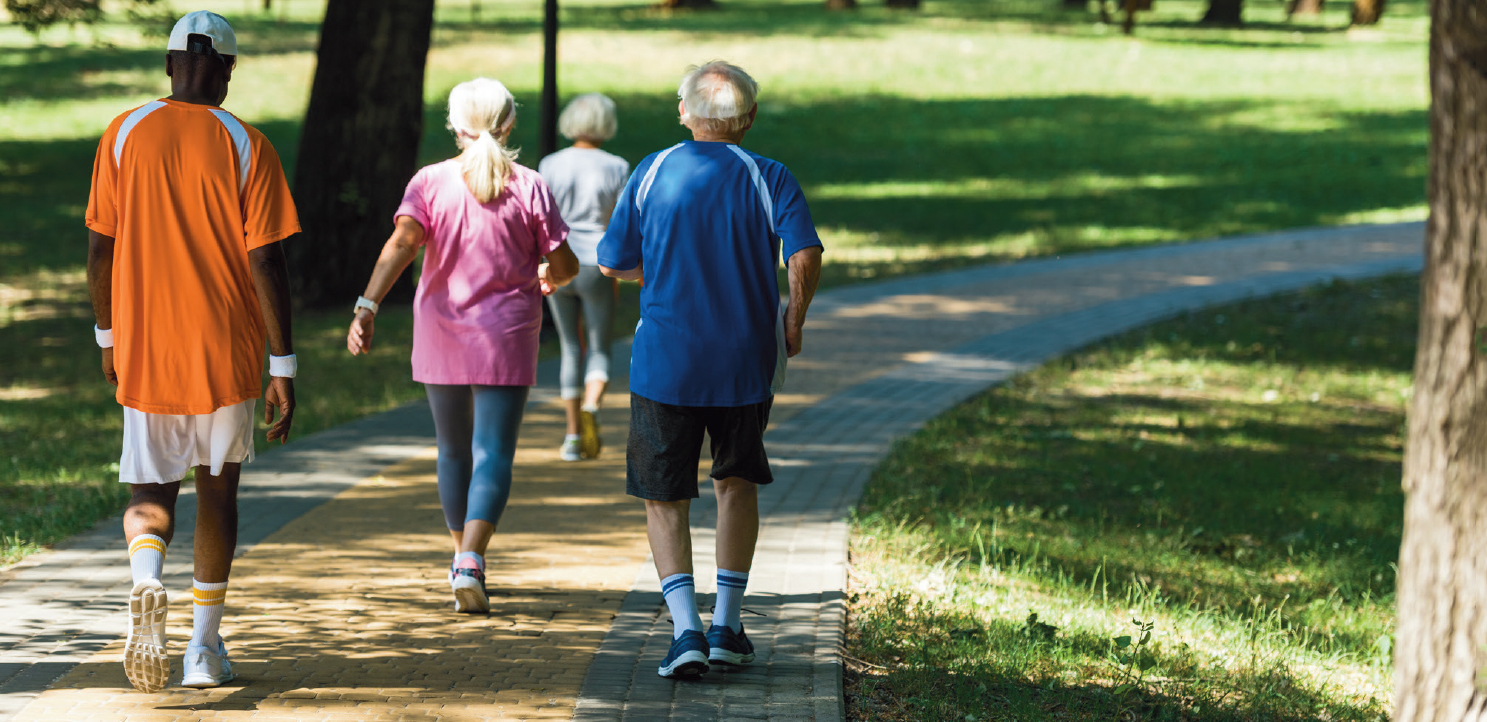Walking, wheeling and cycling offered on prescription in new trial
Social prescriptions, including walking, wheeling and cycling, will be offered by general practice as part of a new trial to improve mental and physical health and reduce disparities across the country. The government has provided £12.7 million in multi-year funding to 11 local authority areas in England. The funding will go towards several pilot projects in each location, including adult cycle training, free bike loans and walking groups.
Evaluating impact on patient health
In total, 11 local authority areas will trial social prescriptions. The pilots will be delivered between 2022 and 2025 with on-going monitoring and evaluation to support continued learning. They aim to evaluate the impact of cycling and walking on an individual's health, such as reduced GP appointments and reliance on medication due to more physical activity.
Environmental benefits
Highlighting the benefits to the environment as well as health, Walking and Cycling Minister Trudy Harrison, said: ‘Walking and cycling has so many benefits – from improving air quality in our communities to reducing congestion on our busiest streets. It also has an enormous positive impact on physical and mental health, which is why we have funded these projects which will get people across the country moving and ease the burden on our NHS.’

Another tool in the social prescribing toolbox
Minister for Health, Maria Caulfield, said: ‘Getting active is hugely beneficial for both our mental and physical health – helping reduce stress and ward off other illness such as heart disease and obesity. The UK is leading the way in embedding social prescribing in our NHS and communities across the country.’ Ms Caulfield went on to say: ‘We've already exceeded our target to ensure over 900 000 people are referred to social prescribing schemes by 2023–24 and this pilot will help us identify further schemes to reduce disparities and boost mental and physical wellbeing across the country.’
New continuous glucose monitor available on prescription
Patients with type 1 diabetes in England are now eligible for continuous glucose monitors (CGMs), after NHS England secured a deal with the manufacturer of Dexcom One. Up to now, the only CGMs widely available on prescription have been Flash devices.
Both Flash and CGM involve wearing a small sensor on the skin which continuously monitors blood sugar levels using an app on a mobile phone. Flash 1 and 2 involve scanning the sensor with a mobile phone to see blood sugar levels, whereas with CGM that information appears on the phone automatically. The new deal gives patients more choice.
The NHS has surpassed its initial Long Term Plan target to get more people benefiting from flash monitors ahead of schedule – with recent data showing nearly three-fifths are already accessing the technology. However, national guidance recommends all patients with type 1 diabetes have access to the technology.
Dr Partha Kar, national speciality advisor for diabetes and obesity said: ‘This is a huge step forward for type 1 diabetes care and these monitors will be life-changing for anyone with the illness – giving them more choice to manage their condition in the most convenient way possible – as well as the best chance at living healthier lives, reducing their risk of hospitalisation and illnesses associated with diabetes, which in turn reduces pressure on wider NHS services.’
Helen Kirrane, Head of Policy, Campaigns and Mobilisation at Diabetes UK, said: ‘Pieces of wearable technology like this can have a transformative effect for people living with diabetes, improving their quality of life and diabetes outcomes. We know that getting access to continuous glucose monitors can be difficult, even when people meet the eligibility criteria, so having more of them available on prescription is a big step forward towards greater choice and easier access.’
Monkeypox vaccines to be used in smaller doses to stretch supply
Three NHS sites – one in Manchester and two in London – will begin a pilot scheme offering eligible patients smaller doses of the vaccine used in the UK's monkeypox outbreak, helping to stretch supplies to protect more people.
The approach, known as ‘fractional dosing’, has been used in other outbreaks worldwide when vaccine supplies are constrained and is safe and clinically approved.

Increasing the number of people who can be vaccinated
Under the approach, eligible people aged 18 and over will be offered a 0.1 ml dose of the smallpox vaccine administered intradermally, instead of the 0.5 ml dose that is typically administered subcutaneously or intramuscularly. This will potentially enable up to a 5-fold increase in the number of people that can be offered vaccination. This approach has recently been authorised in the US by the Federal Drug Administration for its own monkeypox response, as well as by The European Medicines Agency Emergency Task Force.
Data gathered from the three pilot sites will be used to inform planning for possible wider use when more doses of the vaccine arrive in the UK.
Supplies are limited
Dr Mary Ramsay, Head of Immunisation at the UK Health Security Agency (UKHSA), said: ‘Global supplies of the smallpox vaccine used to combat monkeypox are limited but we acted early to ensure the UK obtained the maximum number of doses available. Adopting this tried and tested technique will help to maximise the reach of our remaining stock, including the 100 000 doses due to arrive in the country next month, potentially enabling us to offer protection for many more thousands of people.’
Dr Will Nutland, Honorary Assistant Professor at the London School of Hygiene and Tropical Medicine, said: ‘Fractional dosing provides the potential for many more people to receive vaccination to protect against monkeypox. Given the current global shortage of vaccine supply, this decision is pragmatic and welcome. Communities we are engaging with are keen to receive vaccination as soon as possible, and the pilots provide the opportunity to understand the acceptability and feasibility of providing vaccination this way. Evidence shows that fractional dosing, when correctly administered, is as effective as the vaccination method currently in use. We must now collectively move to ensure that those who are given the opportunity to receive vaccination are fully informed and are confident to come forward when invited.’
Changes to post-exposure vaccinations
In addition to piloting the fractional dosing approach, UKHSA has determined that, due to the limited vaccine supply at this time, the post-exposure offer of vaccination should be reserved for those close contacts who are at highest risk of severe illness – children under the age of 5 years, people with immunosuppression and pregnant women. These individuals will continue to be offered the standard 0.5 ml dose of the vaccine (subcutaneously or intramuscularly).


